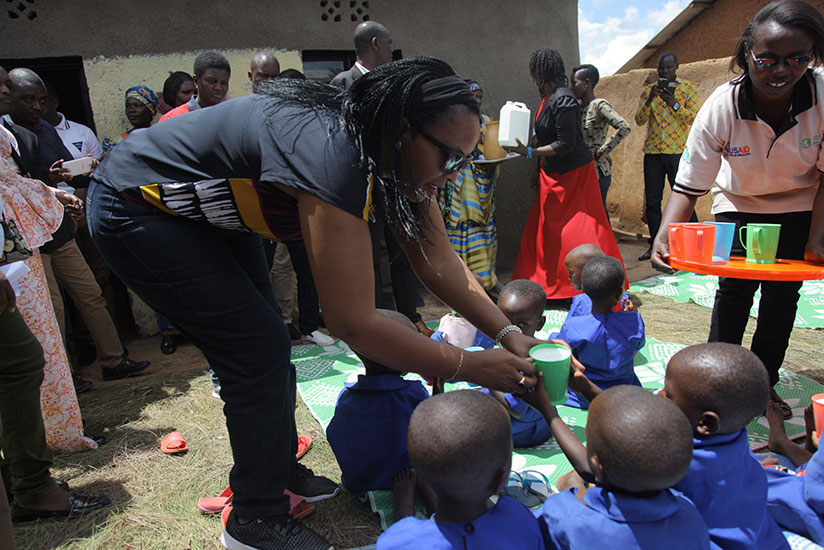Reducing stunting among children in the country will require everyone’s responsibility to reduce the rate to at least 6 per cent each year, if the country is to achieve the target of 15 per cent of stunting by 2020.


Reducing stunting among children in the country will require everyone’s responsibility to reduce the rate to at least 6 per cent each year, if the country is to achieve the target of 15 per cent of stunting by 2020.
Officials said this in Huye District during a meeting between officials from the Ministry of Gender and Family Promotion (MIGEPROF), and the Ministry of Local Government (MINALOC), as well as local officials.
According to the officials, reducing stunting is a priority if the country has to develop and have a healthy future generation.
Presenting figures about the rate of stunting and malnutrition in the country, Dr Anita Asiimwe, the National Early Childhood Development Program coordinator, said the figures are alarming and more efforts need to be put in if the trend is to be reversed.
Quoting the Demographic and Health Surveys (DHS) 2015, Asiimwe said stunting stands at 38 per cent while the 2020 target is to reduce it to 15 per cent.
Stunting was at 42 per cent in 2010 and Asiimwe said while it has reduced, there is need for extra efforts to achieve the set target.
"We are required to reduce it by at least 6 per cent each year to achieve our 2020 target, we have made strides but we are still at 34 per cent, this is huge,” she said adding that Southern and Western provinces are most affected.
"We should publically shame parents whose children are stunted,” she added, adding that in most cases stunting is perpetuated by a poor mindset and not lack of food in households.
She also blamed poor hygiene, lack of skills to prepare balanced diet and, in some cases, irresponsible parenting.
"Stunting is caused by malnutrition and if a kid is not helped to get good nutrition in the second year, the brain gets more affected than the physique, they can’t follow nor perform well at school and their productivity is less by 10 to 20 per cent compared to a well grown person,” Asiimwe said. She also said that a recent survey indicated that 19,000 households in the country do not have latrines.
"We need to analyse the cause of this is because it is not because of poverty; that we have diarrhea, it is not that we are financially poor,” she said.
Asiimwe stressed the need to have an ECD centre at village level to ensure that stunting issues are addressed to ensure the rate is successfully minimised.
Commenting on the current figures, Minister for Gender and Family Promotion, Espérance Nyirasafari, said that while fighting stunting is a shared responsibility, women are not doing their job in promoting hygiene and sanitation.
"As women we pledged to promote hygiene and sanitation, women have prime responsibility in promoting proper hygiene and sanitation even if we need to encourage our male counterparts to join us in this effort,” she said.
"Stunting and malnutrition is an issue we all have to reflect on, in some districts it is above 50 per cent, you realise it is a serious issue, whatever we are doing in infrastructure development, we are doing nothing if we can’t address the issue of stunting and malnutrition,” she added.
She also called for faith based organisations to play a greater role in supporting family promotion programmes.
"We have been discussing these issues and need to hold each other accountable everyone so that whoever is unable to serve gives space to others,” she said.
Nyamagabe Vice Mayor in charge of Social affairs Prisca Mujawayezu said the issue of stunting and eradicating poor hygiene are given priority in the district.
"We have 157 home-based ECDs and are working hard to fight stunting by feeding them together at these centres,” she said.
editorial@newtimes.co.rw


